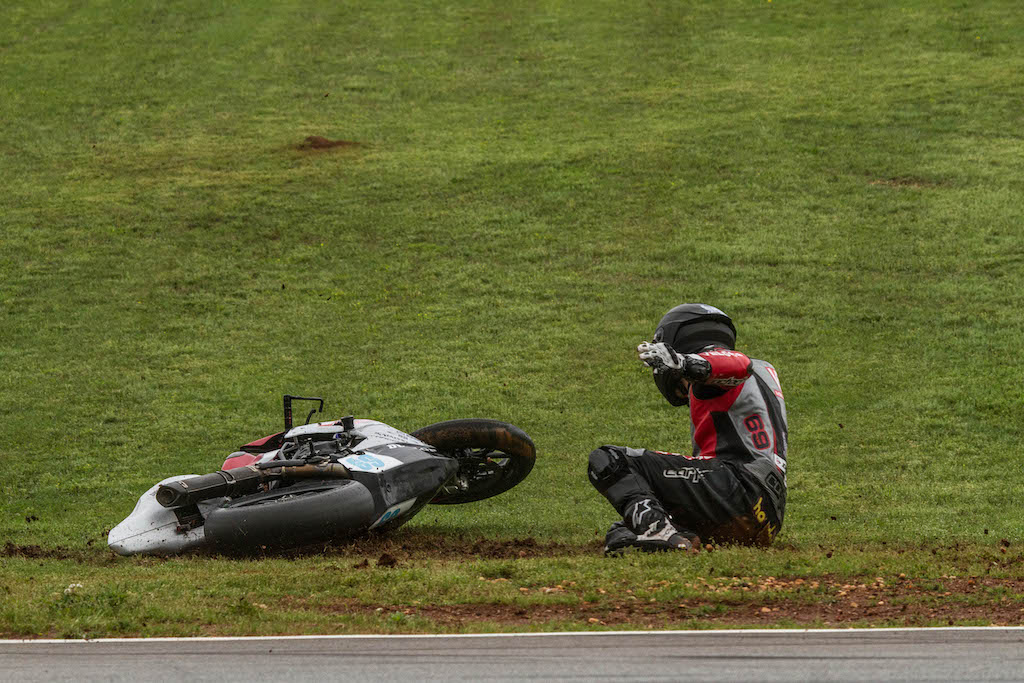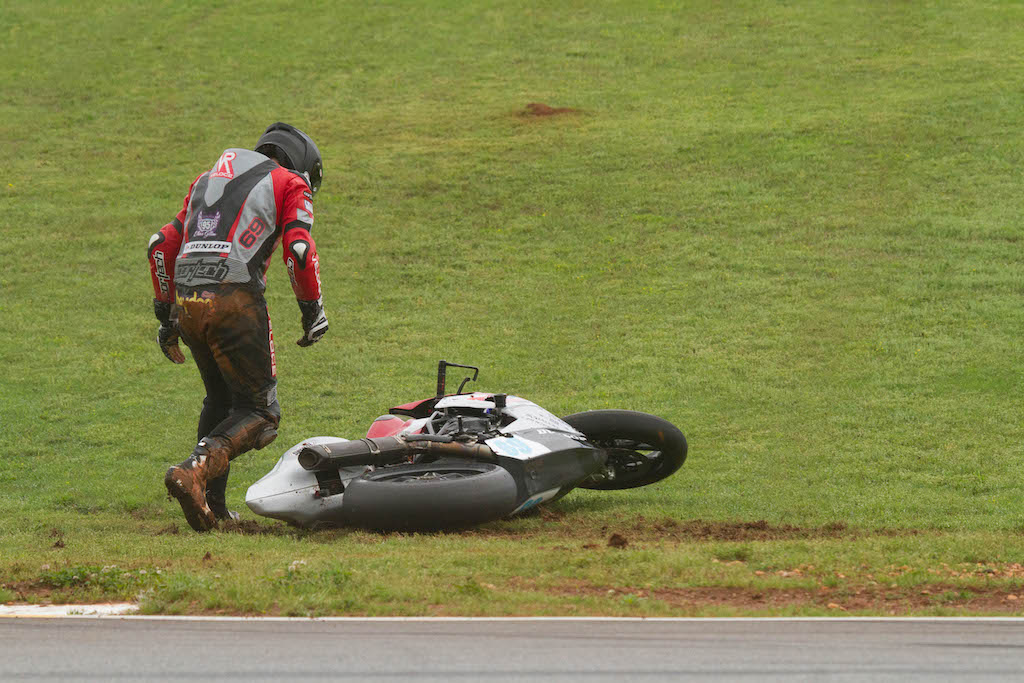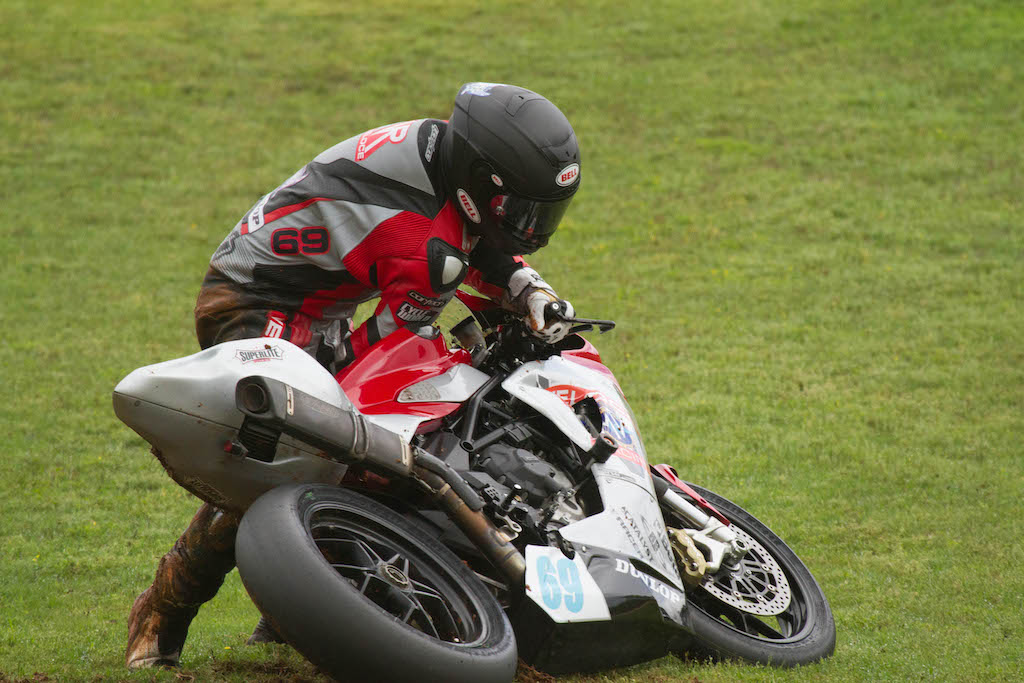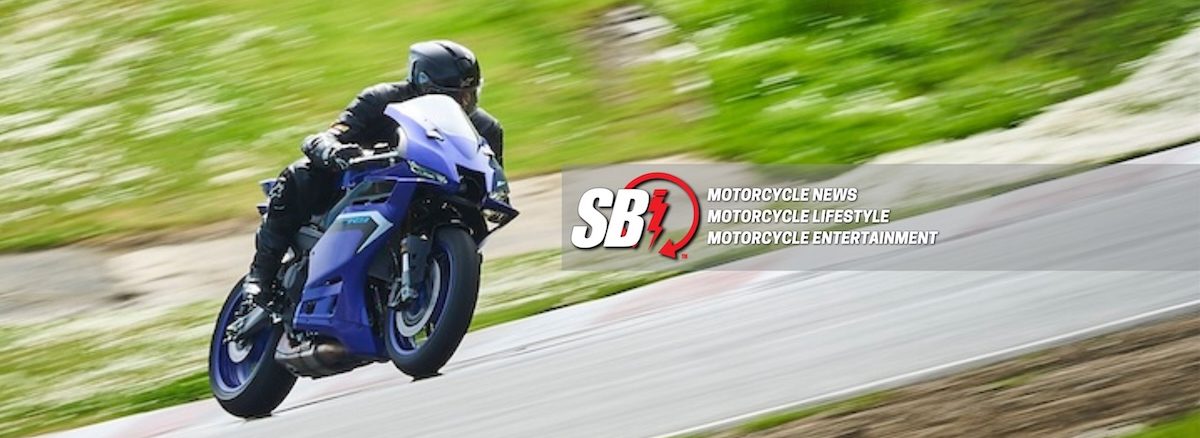
This article will cover some of the best practices we have found to help minimize injury in the event of crashing while riding a motorcycle.
Over the past several years, we have written dozens of articles about how to ride both faster and safer. Most of the same techniques that top racers use to win championships are directly applicable to both track day and street riders who want to ride safer. However, despite our best efforts sometimes we still fall down. This article will cover some of the best practices we have found to help minimize injury when crashing.

The track is a beautiful combination of exhilaration and risk that becomes a lifelong passion for most who try it. When riding the track, we have the benefits of being in the safest environment possible. Without the presence of cars, mailboxes, telephone poles, and other unfavorable obstacles we can learn new skills and enjoy the potential of our motorcycles in a fantastic environment. Quality facilities have runoffs, air fence, and corner workers who warn you of unexpected dangers. Track riders also wear full leather suits and track level riding gear. The end result is that in the event of crashing, riders are far less likely to be injured than if they fall on the street.
The inherent existence of danger is part of what makes any sports exciting. It doesn’t matter if you are standing at home plate in the face of a 95mph fastball, staring down a 250-pound linebacker on the other side of the field, or carving a sportbike around a 90 mph sweeper. The danger is what creates both the thrill and the important requirement for each of us to assess our comfort level with the edge of traction. As we each develop our riding skills, whether on the track or on the street, we are bound to make a mistake sooner or later that results in crashing. If that fall happens on a track, your chances for a favorable outcome are greatly increased, especially with some key words of advice.

The best way to prepare for an unexpected situation is to decide your course of action in advance. While most riders don’t want to think about crashing, some basic preparation can potentially be life-saving. Many riders fall unhurt and find themselves still on the track surface when they come to a stop. The natural (and correct) reaction of these riders is to get off the track as soon as possible. However, this is a scenario where premeditated decision-making can save your life.
The first thing you need to do is to quickly assess the situation and locate the closest edge of the racetrack. Once you have done this, stay as low as possible and crawl off the side of the track as fast as you can. Never get up and run! It is critically important to remain below the axle height of the motorcycle while crawling. If a motorcycle runs over the top of you (which is what happens when you are below axle height), your chances of surviving with minor injuries are greatly increased. However, if you stand up (or even sit up) a motorcycle can then run through you, which will most likely cause serious injury. The chances of a favorable outcome are significantly increased when you stay low and below the axle height.
In the event of an incident that involves any type of speed, there are a few suggestions that can help reduce the likelihood of injury. The first is to do all that you can to avoid tumbling. As such, I always try to spread out to give myself the widest base possible to reduce the chances of starting this process. If you slide for a long time, the greatest danger is that the friction will generate too much heat. Shifting slightly from one side to the other can help reduce the likelihood of a friction burn. In this case, having a top-quality glove (I have had fantastic luck with Held) to use for stability while sliding is a big help.

When you start slowing down at the end of your slide, remember not to attempt to get up before you stop sliding. While the desire to get off the track is understandable, I have seen riders who would have otherwise come to a harmless stop end their slide with a big hit when they plant their feet before coming to a stop. If you start sliding at a high rate of speed, it may seem safe to plant your feet at 20mph but this anxiousness can potentially cause tumbling and injury.
As much as riders want to minimize damage to their motorcycles in a fall, the best advice I can give you in this respect is to get as far away from your bike as possible. If you find yourself sliding next to your motorcycle I would suggest kicking or pushing it away. The last thing that you want to do is to get tangled with a 400-pound object that either starts to flip or perhaps gets to a wall first and bounces back at you.
Body Position – Improve Your Skills
If you find yourself tumbling, the best way to minimize injury is to draw your arms and legs in towards the center of your body and relax as much as possible. While this may not be a natural reaction for many riders, the act of trying to stop a tumble can often result in soft tissue injuries. Once a tumble has begun, tuck your chin towards your chest and put your arms and legs in a position that reduces the likelihood of them catching on the ground.
As with most things, when you make a plan in advance your likelihood of reacting well in an unexpected situation (like crashing) is greatly increased. Please take a moment to imagine the reactions that you would want to have if you ever fall down.
Until next time… Ride fast. Ride safe!
Images: Meekail Shaheed
About The Author
Discover more from SportBikes Inc Magazine
Subscribe to get the latest posts sent to your email.



1 thought on “Crashing – Improve Your Skills”